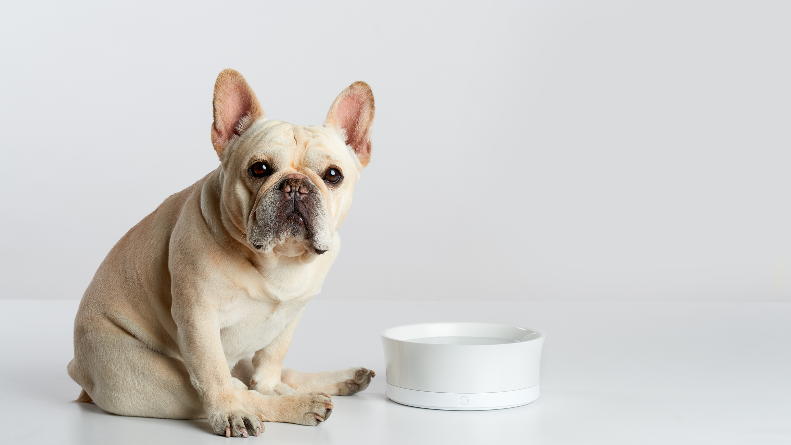Company: Startup Consumer Products Company
Industry: Consumer Products
Use Case: Wi-Fi Dog Dish
Services Used: Electronics, Firmware, Sensors, Wireless Communication
Results:
- Precise food weighing for pet health
- Prevent overfeeding or underfeeding of pet
- Real-time feeding data transmission
Customer Introduction
This company, dedicated to improving pet health, had an innovative vision for a Wi-Fi-enabled smart dog dish that addressed the challenge of underfeeding or overfeeding, particularly in multi-caregiver households. The dish would weigh food accurately and communicate with pet owners in real time.
Problem/Goal
- The dish’s load cells did not provide accurate readings, making the weighing system unreliable.
This dish should achieve consistent and accurate weighing of 5 Kg within +/-5 grams. It also has to remain accurate if a large dog steps on the dish, an overload of more than 10 Kg.
- The dish needs to sense the weight, calculate food eaten, and transmit the results to cell phones; however, the required expertise for such development was lacking.
Partner with experts with a broad range of experience to ensure accurate weight sensing, calculation, and seamless data transmission to mobile devices.
- The prototype battery life is insufficient, hindering user convenience.
Incorporate adequate power management to extend battery life to at least two weeks, reducing the need for frequent battery replacement.
- Faulty firmware design prevents existing firmware from shutting down all electronics in sleep mode, leading to increased power consumption.
Refine firmware to ensure electronics powers down in sleep mode to preserve battery life.
- The electronics did not fit appropriately within the enclosure, risking potential damage.
Redesign the electronics for a better fit and enhanced protection of components.
Solution
The company had a prototype developed, but there were several problems. It identified the need for a partner with extensive experience in sensors, firmware, hardware, and wireless design. Voler Systems stood out as the ideal choice based on its reputation for understanding the issues and its proven track record in delivering technological solutions to intricate problems.
Voler Systems engineers delivered the following solutions:
- Analyzed the load cell performance and identified the issue of their repeatability using sensor expertise. Careful testing revealed that the load cells did not meet their specified repeatability. This enabled the customer to demand load cells that met the specifications.
- Detected and rectified a flaw in the firmware that led to unnecessary power consumption. Revised both the hardware and firmware design to optimize power consumption.
- Redesign the electronics to fit within the enclosure.
- Improved the transmission mechanism to send data seamlessly to mobile devices.

Results & Benefits
- Extended battery life to two weeks provides users greater convenience with less frequent battery replacement, making the product more user-friendly and reducing interruptions.
- Accurate weighing mechanism allows owners of small and large dogs to feed them the correct amount by indicating a green light for feeding and a red light for the pet having been fed, ensuring the health and well-being of the pet.
- Properly sized electronics fits the enclosure properly, making assembly during manufacturing easier.
- Properly functioning device allowed the company to raise money to move into production.

Inspiration
At Voler Systems, our commitment to precision and innovation came to the forefront as we tackled the challenges presented by the smart dog dish. Every obstacle was an opportunity to showcase our expertise and deepen our partnership with the company.
“Partnering with Voler Systems was the pivotal decision that propelled our project forward."
Discover how the right expertise can transform your vision into a groundbreaking reality. Contact Voler Systems today about your project.
